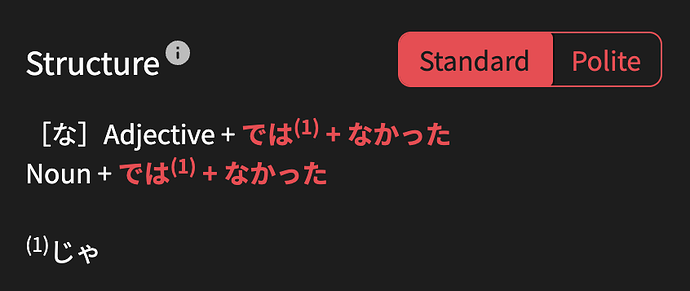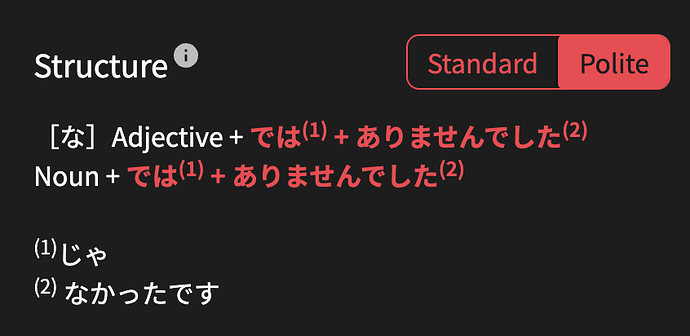Digging up an ancient thread here. I’ve also found myself confused by these numbers, particularly when there are more than one. For example, from this lesson:
So, IIUC standard is either of these:
- Noun + では + なかった
- Noun + じゃ + なかった
And polite is either of these:
- Noun + では + ありませんでした
-
Noun + じゃ + なかったです
But, do we have to swap both 1 and 2? What about these, are they also valid polite options?
- Noun + じゃ + ありませんでした
-
Noun + では + なかったです
And if so, I have to note that the 4 bolded ones above (two of which are standard and two of which are polite) are matching pairs except for the trailing です on the polite version. Which kind of makes me wonder, "why bother with the other 2 versions (the ones with ありません in them), if I can get polite for the low low price of standard + です? But I realize it doesn’t actually work that way, I need to understand all options if I want to be able to understand the language.
But I guess I’m still curious if all 6 options above are truly valid, and if there is any difference between the last 4? I often see “semi-polite” as a prompt in the reviews, but I don’t think I’ve ever noticed it in a lesson. Maybe this is what that means? Maybe the “standard plus です” versions are semi-polite?


